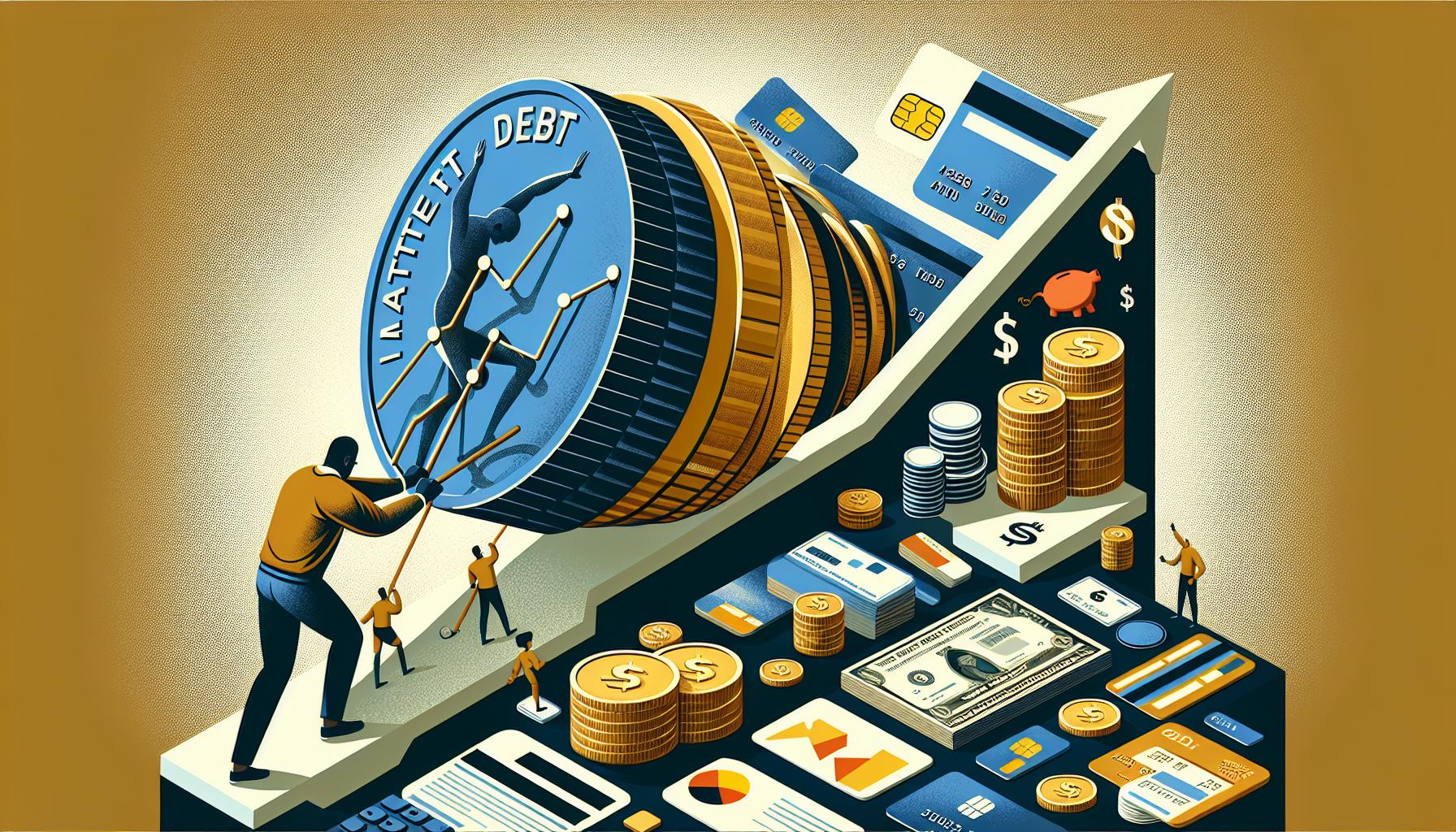
Mastering the Mechanics of Debt: Consolidating Credit Card Debt Made Simple
Making headway in the labyrinthine loops of credit card debt is often like confronting a Goliath. An immediate question that leaps to the mind is, “How to consolidate credit card debt?” The simple answer is by combining all your credit card balances into one manageable monthly payment. To delve deeper, the process includes finding the right tools, such as a balance transfer card or a debt consolidation loan, that can help simplify your payments and potentially reduce your interest. We’re about to chart the course, unmasking the multiple aspects of this journey from understanding consolidation basics, selecting the right methods, to assessing how to march ahead without mishap.
A Brief on Consolidating Credit Card Debt
Like a bouncing ball in a pinball machine, the cycle of owning multiple credit cards can send you spinning from one payment to another. Debt consolidation aims at synchronizing these payments into a streamlined flow. It’s the process of bringing together your various credit card debts into one loan or lump sum payment.
One chief advantage of this approach is the potential for lowering your interest rate. Imagine this as your own personal finance orchestra. Previously, every credit card was playing its tune at various interest rates, creating a cacophony of debts. Debt consolidation, then, serves as the conductor, bringing harmony to your finances by syncing everything at a potentially lower interest rate.
Understanding the Game Plan
Consolidating your credit card debt isn’t akin to waving a magic wand and making all your financial worries vanish. It demands a strategic and patient approach. Securing a lower interest rate can propel you out of the pit of high-interest debt, curtail your monthly payments, and present a structured road to repayment.
The Right Tools for Debt Consolidation
Stepping onto the consolidation path requires arming yourself with the right tools. Balance transfer credit cards and debt consolidation loans stand as two of the best tools available, acting as your financial Avengers, if you will, assisting you in battling your debt.
Balance Transfer Cards and Consolidation Loans
A balance transfer card is typically a credit card with a low introductory APR period. Transferring your various credit card balances to this card can aid in reducing your interest. On the flip side, a debt consolidation loan is a fixed-interest-rate loan that you pay off over a specified period. Such loans can cover your credit card debt in one fell swoop and offer a finite end date to your repayment plan.
Proceeding with Prudence: Tips for Consolidating Credit Card Debt
Venturing into the consolidation universe involves more than grabbing the first low-interest loan you spot. It’s essential to consider your credit score, compare rates, scrutinize terms, and understand fees. Also, ensure you have a robust repayment plan in place.
Abiding by the Fine Print
Before taking the plunge, remember to read the fine print of any consolidation loan or balance transfer card. Hidden fees or changes in terms after the introductory period can quickly turn a good deal sour. Thus, staying vigilant is the key to successful debt consolidation.
Consolidating Credit Card Debt: Plan, Proceed, Prosper
Consolidating credit card debt can seem daunting, but with a logical outlook and the right tools, it’s a mountain you can conquer. In simple terms, credit card consolidation is your financial compass, steadily guiding you towards a healthier financial horizon.
Final Brushstrokes
Remember, consolidating credit card debt isn’t a silver bullet for poor spending habits. It’s a means to simplify payments and mitigate high interest, but ultimately, long-term debt relief is a canvas colored by responsible credit use, budget adherence, and smart saving.
Conclusion
In conclusion, consolidating credit card debt is both an art and a science, demanding strategic planning and careful implementation. By combining your debts, potentially decreasing your interest rates, and establishing a clear repayment plan, you can overcome the chaos and paint a portrait of financial stability.
Frequently Asked Questions
1. What is credit card debt consolidation? - Consolidation is combining all your credit card debt into a single loan or monthly payment to simplify repayment and possibly reduce interest.
2. How does consolidating credit card debt impact my credit score? – Initially, your credit score may take a slight hit due to the application for a new loan or credit card. But in the long run, timely payments can improve your credit score.
3. Can I obtain a consolidation loan with a low credit score? – Yes, there are options for people with low credit scores, though you may face higher interest rates.
4. What is the first step to consolidate credit card debt? – The first step is understanding how much you owe and what interest you’re paying on each card. This way, you can search for loans or balance transfer cards that offer lower interest rates.
5. What pitfalls should I look for when consolidating debt? – Be careful of hidden fees, changes in terms post the introductory period in balance transfer cards, and confirm that the reduction in interest rate isn’t temporary.

